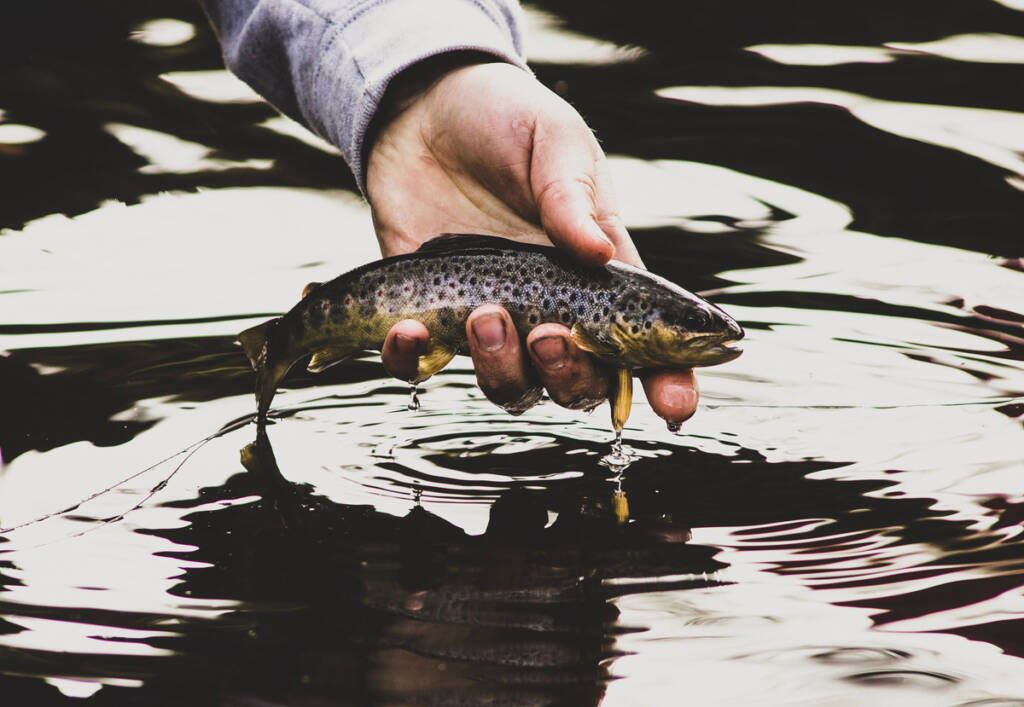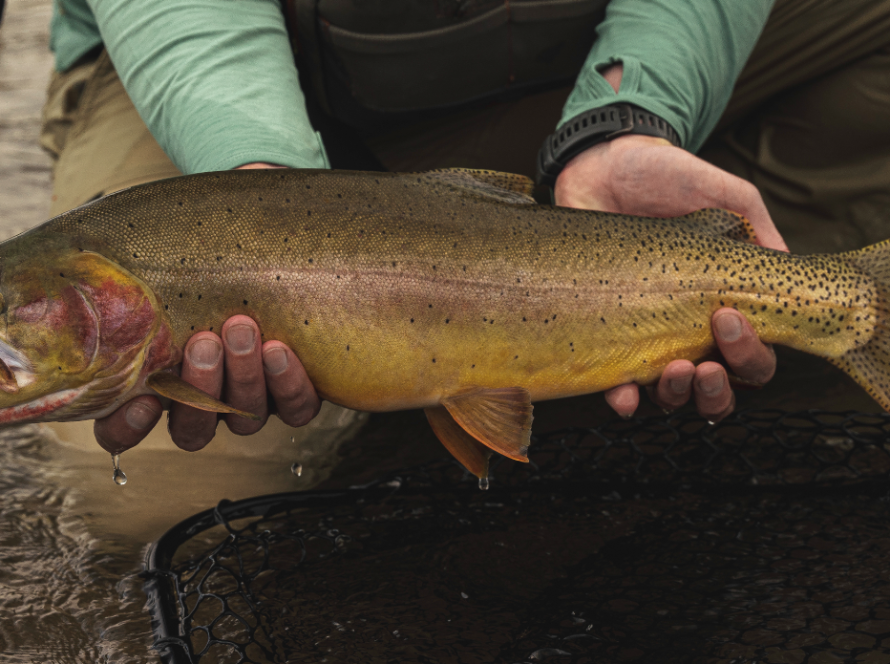The term “Euro Nymphing” gets thrown around a lot these days. As per usual with any fly fishing technique, everyone has their ideas about how it should be practised. Unfortunately, there are so many ideas being thrown around that it is hard to know what to listen to. In this article, I am going to try and cut through the noise and explain where the technique has come from, why it helps you catch so many more fish and a bit about how I do it.
BY OSCAR BOATFIELD






So what is Euro Nymphing and where has it come from?
Euro Nymphing is a blanket term we use to refer to a multitude of different nymphing techniques, with the primary ones being; French, Czech, and Polish. Although similar these three techniques were developed for very different reasons.
The Czech and the Polish styles are rooted in a time where it was necessary to catch fish to survive. Without going into too much detail they are the outcome of refining a technique that was used to catch fish to feed families while the countries were behind the iron curtain. These techniques typically use a team of heavily weighted flies which are fished either at the pace of the current or pulled slightly faster than it. The flies are either bouncing along the bottom or are very close to it. These techniques are fished both up and downstream.
French Nymphing, on the other hand, was developed to catch big, spooky, Wild Brown Trout. It started in Frances Jura region where anglers could see these huge fish lurking in the deep clear waters of the Jura valley but they were struggling to catch them. They found that the fish would only eat very small nymphs, presented without any drag and had to be cast from a distance. To achieve this the anglers started to use very long leaders which allowed them to present the flies with little drag and from a distance. The use of these long leaders proved highly effective and before long the French national fly fishing team heard about this technique and made it their own. They took this long leader nymphing technique, added an inline indicator, and French Nymphing was born.

The similarity between these styles of fishing is that they were all developed to catch lots of fish in the most efficient way possible. There is a reason why the Czech and French teams win pretty much everything. In recent years we have seen a meteoric rise in the practice of Euro Nymphing outside the competition world, and with this rise, we have also seen an equal increase in differing opinions on how the technique should be practised. Whilst potentially advancing the technique, I believe it has over complicated it to a point where someone looking to learn it can easily be overwhelmed with confusing information. If you are one of those people, then fear not, I am going to try and break it down for you.

How does one Euro Nymph?
So as a general rule what we now call Euro Nymphing is actually a combination between the French and the Czech styles. It’s a very versatile method which, when fished correctly, is devastatingly effective. If you mimic my set up, it allows you to Euro Nymph, fish dries and New Zealand style all without having to change anything but your fly.
The Setup
10ft 2wt rod – We use a long rod to keep as much line off the water as possible. This reduces drag. Some even use rods over 11ft, I prefer a rod of 10 – 10ft 5inch in length, any longer and I feel you lose control.
Any reel – It really doesn’t matter, it just holds your line. Always good if it balances the rod though.
Line – A Euro Nymphing Line of some description. Everyone makes them, take your pick.
Leader – I have spent years developing and testing different leader tapers and materials. Some are better than others but in reality, it’s pretty marginal. Most of the time now I will nail knot a 9ft 3X tapered leader to the end of my Euro Nymphing line and be done with it. To that I will attach a 15cm section of 3x bi-colour indicator with a micro ring or if I want to be comp legal a perfection loop.
Tippet – I like to use a tippet without much stretch and will go as fine as I can get away with. My go-to is Stroft LS at 0.08mm diameter. The light tippet is protected by the light rod and allows the fly to move a lot more freely in the water. My tippet length will vary depending on the depth of water that I am fishing.




The Theory
I think where this technique is so incredibly superior too many others is the following three benefits.
You can accurately control the depth your fly is fishing. This may sound simple but it is very complicated, it requires a good understanding of how water moves and how your fly is going to interact with the water. Most of the time the aim when Euro Nymphing is to have your fly/flies near or bouncing along the bottom of the river. To fish effectively you want your flies to be in this fish catching zone as quickly as possible, to do this you need to judge the weight of your fly correctly and ensure you have the correct length of tippet. I have found the best way to do this is to use one fly and start heavier than you think you need. If you are catching the bottom a lot then you are fishing too heavy so go lighter. Once you have done this a few times you will soon learn what weights you need to suit the water that you are fishing. I often still fish with one fly as it allows for better control of depth than using two or three flies as you can be more accurate with your length of tippet and weight of flies. The only occasion when I use more than one fly is if I need to use a heavy sacrificial fly to get my fish-catching fly down deep in fast water.
You can make your fly do exactly what you want it too. This technique allows you to manipulate your fly accurately and effectively. A small lift of the rod tip can be enough to induce a take or hook a fish. You can fish your fly drag-free, you can pull it slightly faster than the current, or you can bounce it back towards you which will put lots of movement in the fly. You can fish upstream or downstream sometimes even both in one cast. Having this much control of what your fly is doing means you also much more in touch with your fly so when a fish takes it you will know significantly faster than other forms of indicator fishing. Most of the time when fishing with an indicator there is a significant delay between the fish taking the fly and the take registering on the indicator. With this technique, if you are pulling your fly slightly faster than the current you will feel and see the take pretty much instantaneously, if you are fishing a dead drift then it’s not quite as quick but still significantly faster than using an indicator or indicator dry fly. This ability to register takes is one of the reasons you can catch and land so many fish when Euro Nymphing.
You can effectively fish in spots where other anglers can’t. Typically when fishing with a conventional fly line on let’s say a 9ft rod, there is only a certain amount of line you can hold up off the water before the weight of your line starts pulling your flies. This means that if you are fishing a run and would like to fish over the far side of the run you are going to struggle to do so effectively. With the length of rod and lightweight line used in Euro Nymphing, you can reach across and hold significantly more line off the water allowing you to fish without drag at distance. Something that is very challenging to do with other techniques.
In practise – 4 tips for success
Focus on the faster water. You can Euro Nymph in slow water but it’s better in the fast stuff.
Keep moving. Take a step for every cast you make, the mater water you cover, the more fish you will catch.
Get closer to the fish. You are almost always better off getting closer to the fish than attempting to cast further. But remember the closer you get the stealthier you need to be.
Fish everywhere. You can have a good idea but you never know where fish might be. Cover all the water that’s in front of you, fish turn up in the most unlikely spots!






